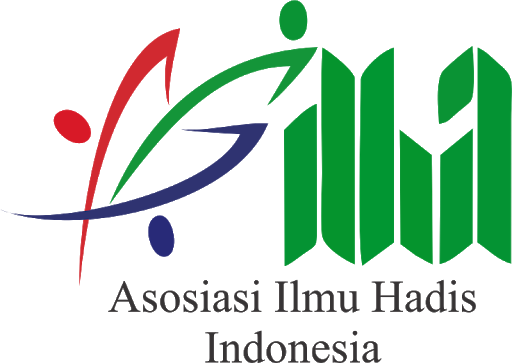The Tradition of Nyewu Shalawat in Pesantren Miftakhul Jannah, Central Java
DOI:
https://doi.org/10.14421/livinghadis.2020.2303Keywords:
Living Hadith, Tradition, Nyewu Shalawat, Hadith, SunnahAbstract
This research elaborates the practice of nyewu shalawat (recitation for the praise of the Prophet)) in Pesantren Miftakhul Jannah, Central Java. It focuses on the elaboration on the meaning of the prayers recited throughout the process of running the tradition. As a phenomenological study, it sees the tradition through the perspective of functional theory. It argues that the tradition held by the Pesantren is a sort of living hadith. Not only do the people engage in this tradition have some hadith as the basis, they also regard this tradition as a cult that must not be detached from their lives.
 Abstract viewed: 1092 times
|
Abstract viewed: 1092 times
|
 PDF downloaded = 973 times
PDF downloaded = 973 times
References
Aini, A. F. (2015). Living Hadis Dalam Tradisi Malam Kamis Majelis Shalawat Diba’ Bil-Mustofa. Ar-Raniry, International Journal of Islamic Studies, Vol. 2(No. 1), 221-235.
Al-Bantani, M. N. (t.t). Tanqih al-qaul al-hatsits. Semarang, Semarang, Indonesia: Pustaka Alawiyah.
Aryani, S. A.-M.-3. (2017). Healthy-Minded Religious Phenomenon in Shalawatan: A Study on the Three Majelis Shalawat in Java. Indonesian Journal of Islam and Muslim Societies, Vol. 7(No. 1), 1-30.
Bunganegara, M. H. (2018). Pemaknaan Shalawat: Pandangan Majelis Dzikir Haqqul Yaqin. Tahdis: Jurnal Kajian Ilmu Al-Hadis, Vol. 9(No. 2), 180-199.
Faizah, U. (2018). Kontribusi Majelis Shalawat al-Wasilaa Dalam Merubah Kepribadian Pemuda di Desa Dukuh Mencek Sukorambi, Jember. Tesis , Universitas Islam Negeri Sunan Ampel, Pascasarjana , Surabaya.
Farid, A. (2012). Tazkiyatun Nafs: Penyucian Jiwa Dalam Islam. Jakarta, Jakarta, Indonesia: Ummul Qura.
Habibillah, M. (2004). Shalawat Pangkal Bahagia. Yogyakarta, Indonesia: Safirah.
Hasan, N. (2016). Model Pembelajaran Berbasis Pondok Pesantren Dalam Membentuk Karakter Siswa Di Pondok Pesantren Raoudhotut Tholibin Rembang Jawa Tengah. Wahana Akademik, 3(2), 92-110.
Iballa, D. K. (2016). Tradisi Mandi Balimau di Masyarakat Kuntu: Living Hadis Sebagai Bukti Sejarah. Jurnal Living Hadis, 1(2), 275-293.
Jazuli, A. (2010). Rahasia Dibalik Ibadah Sunnah. Jombang: Darul Hikmah.
Mardalis. (1999). Metode Penelitian: Suatu Pendekatan Proposal. Jakarta: Bumi Aksara.
Mufidah, d. R., Farida, N. A., & Mufidah, R. L. (2020). Tradisi Sholawat Mansub Habib Sholeh Bin Muhsin Al-Hamidi di Tempeh, Lumajang. Jurnal Living Hadis, Vol. 5(No. 1), 59-78.
Munawwir, A. W. (1997). Kamus Al-Munawwir Arab-Indonesia Terlengkap. Surabaya: Pustaka Progressif.
Qudsy, S. Z. (2016). Living Hadis: Genealogi, Teori, dan Aplikasi. Jurnal Living Hadis, 1(1), 177-196.
Rosyid, N. (2012). Bershalawat Bersama Habib: Transformasi Baru Relasi Audiens Muslim NU Di Indonesia. Jantra, VII(2), 135-44.
Syamsuddin, S. (2007). Metodologi Penelitian Living Qur’an dan Hadis. Yogyakarta: Teras.
Downloads
Published
Issue
Section
License
- Authors who publish with this journal agree to the following terms:
- Authors retain copyright and grant the journal right of first publication with the work simultaneously licensed under a Creative Commons Attribution License that allows others to share the work with an acknowledgement of the work's authorship and initial publication in this journal.
- Authors are able to enter into separate, additional contractual arrangements for the non-exclusive distribution of the journal's published version of the work (e.g., post it to an institutional repository or publish it in a book), with an acknowledgement of its initial publication in this journal.
- Authors are permitted and encouraged to post their work online (e.g., in institutional repositories or on their website) prior to and during the submission process, as it can lead to productive exchanges, as well as earlier and greater citation of published work.
















